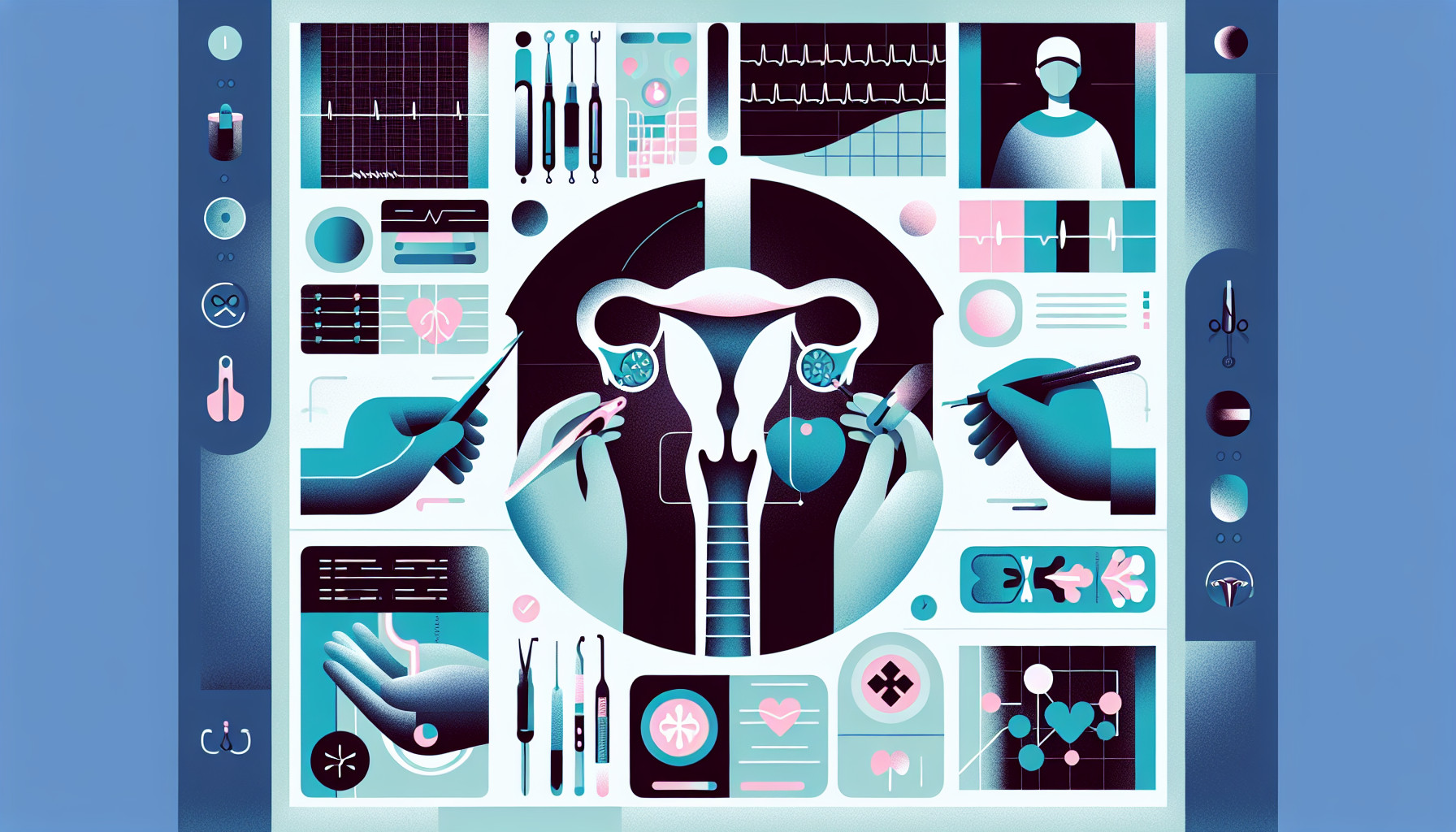Our Summary
This research paper discusses a common treatment for heavy menstrual bleeding called endometrial ablation. The authors note that there are some serious limitations and potential complications with this treatment, both in the short and long term. The paper aims to compare different endometrial ablation devices, their cost-effectiveness, and their impact on quality of life compared to alternative treatments.
The authors found that there’s not enough evidence to recommend one device over another. They also highlight that doctors need to discuss potential complications with their patients, such as the risk of future pregnancy, endometrial cancer, and the need for a hysterectomy due to continued bleeding or pain.
The authors suggest that choosing the right patient for this treatment is crucial to reduce the chance of pain and treatment failure. They recommend that patients with a history of tubal ligation and dysmenorrhea (painful periods) should consider other treatments.
The researchers also mention that an intrauterine device (IUD) that releases a hormone called levonorgestrel could be a more cost-effective alternative treatment. This IUD may offer a better quality of life with fewer complications.
Lastly, they point out that a hysterectomy (surgical removal of the uterus) is a definitive treatment that provides a higher quality of life and fewer complications.
In conclusion, while endometrial ablation can help control symptoms for certain patients, it’s important to choose the right patients for this treatment and inform them about potential complications.
FAQs
- What is endometrial ablation used for and what are the potential complications?
- Is there a preferred endometrial ablation device recommended by medical professionals?
- Are there alternative treatments to endometrial ablation for heavy menstrual bleeding?
Doctor’s Tip
A helpful tip a doctor might tell a patient about endometrial ablation is to carefully consider and discuss potential complications and long-term implications, such as the risk of future pregnancy, endometrial cancer, and the possibility of needing a hysterectomy for continued bleeding or pain. Patients should also be aware that there are alternative treatments, such as the levonorgestrel intrauterine device, that may be cost-effective with fewer complications and a higher quality of life. It is important for patients to be well-informed and properly selected for endometrial ablation to minimize post-procedure pain and ensure successful outcomes.
Suitable For
Patients who are typically recommended for endometrial ablation are those who have heavy menstrual bleeding that has not responded to medical therapy, desire uterine preservation, and are not suitable candidates for hysterectomy. It may also be recommended for patients who are high-risk surgical candidates or who have failed other treatments for heavy menstrual bleeding. Patient selection is key to reducing postablation pain and failure, and patients with a history of tubal ligation and dysmenorrhea should consider alternative treatments. It is important for providers to discuss potential complications, including the risk of future pregnancy, endometrial cancer, and the possibility of needing a hysterectomy for continued bleeding or pain. Additionally, patients should be aware that the levonorgestrel intrauterine device is a cost-effective alternative with higher quality of life and fewer complications.
Timeline
Before endometrial ablation:
- Patient experiences heavy menstrual bleeding
- Patient may have tried other medical therapies without success
- Patient discusses treatment options with their healthcare provider
- Patient may undergo diagnostic tests to determine the cause of their heavy bleeding
- Patient is selected as a candidate for endometrial ablation
After endometrial ablation:
- Patient may experience some pain or discomfort immediately following the procedure
- Patient may have light bleeding or discharge for a few weeks
- Patient should follow up with their healthcare provider for post-procedure care
- Patient may experience a reduction in menstrual bleeding over time
- Patient should be monitored for any potential complications, such as infection or scarring
- Patient should be counseled on the potential for treatment failure and long-term complications, such as the risk of future pregnancy, endometrial cancer, and the need for a hysterectomy in the future.
What to Ask Your Doctor
- What are the potential short-term and long-term complications associated with endometrial ablation?
- What is the likelihood of needing a hysterectomy or additional treatments in the future after undergoing endometrial ablation?
- How does endometrial ablation compare to other treatment options for heavy menstrual bleeding, such as the levonorgestrel intrauterine device?
- What is the success rate of endometrial ablation in reducing or eliminating heavy menstrual bleeding?
- What is the cost of endometrial ablation compared to other treatment options?
- How will endometrial ablation affect my future fertility and risk of endometrial cancer?
- What is the recovery process like after undergoing endometrial ablation?
- What are the potential risks and benefits of different types of endometrial ablation devices?
- How long can I expect the results of endometrial ablation to last?
- Are there any lifestyle changes or precautions I should take after undergoing endometrial ablation?
Reference
Authors: Louie M, Wright K, Siedhoff MT. Journal: Curr Opin Obstet Gynecol. 2018 Aug;30(4):287-292. doi: 10.1097/GCO.0000000000000463. PMID: 29708902
